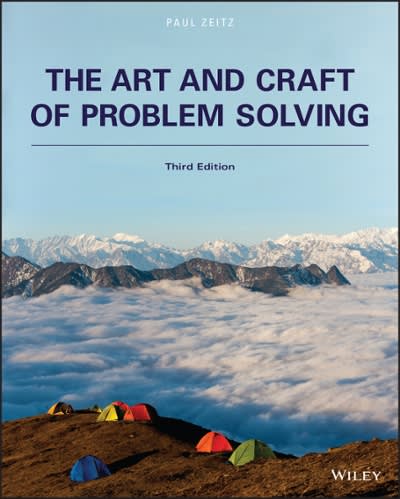Question
2. For this problem, please REWRITE the SOLUTION in a different way ...or, in other words, summarize the already given solution to the problem using
2.
For this problem, please REWRITE the SOLUTION in a different way...or, in other words, summarize the already given solution to the problem using plain English.
Problem:
"Refer to Example 5.5. Suppose you want to find the probability that, of the 20 items randomly selected for inspection, at least one item fails to meet quality standards. Denote this event by D = at least one item fails inspection. One approach to finding this probability is to partition D into the events E1, E2, E3, . . . , E20, where, for each i = 1, 2, 3, . . . , 20, the Ei denotes the event that exactly i items fail inspection. Since E1 through E20 are disjoint, the addition rule says that P(D) = P(E1) + P(E2) +...+ P(E20). As mentioned in Example 5.5, the binomial mass function could then be used to find each P(Ei) in this summation.
Although the addition rule will give the correct value for P(D), an easier method for finding P(D) is to use the law of complementary events, P(D) = 1 - P(D'). The complement of the event D = at least one item fails inspection is the event D' = no items fail inspection. As we will see in Section 5.4, finding P(D') requires only one computation with the binomial mass function, whereas the partition method requires 20 separate computations."
------------------------------------------------------
For this problem, please REWRITE the SOLUTION in a different way...or, in other words, summarize the already given solution to the problem using plain English.
Step by Step Solution
There are 3 Steps involved in it
Step: 1

Get Instant Access to Expert-Tailored Solutions
See step-by-step solutions with expert insights and AI powered tools for academic success
Step: 2

Step: 3

Ace Your Homework with AI
Get the answers you need in no time with our AI-driven, step-by-step assistance
Get Started


